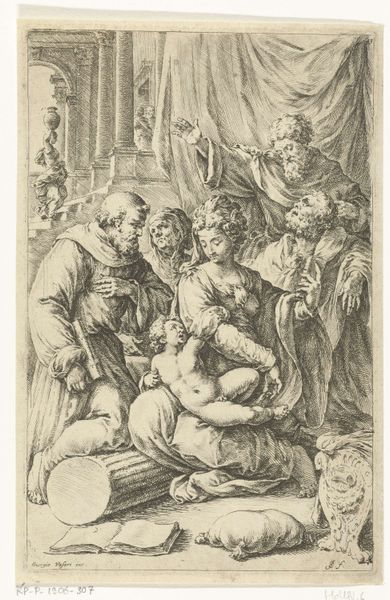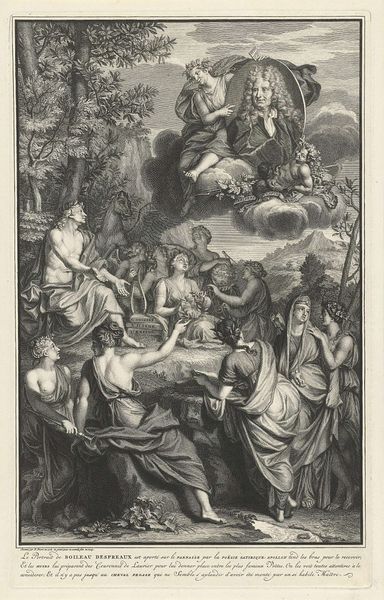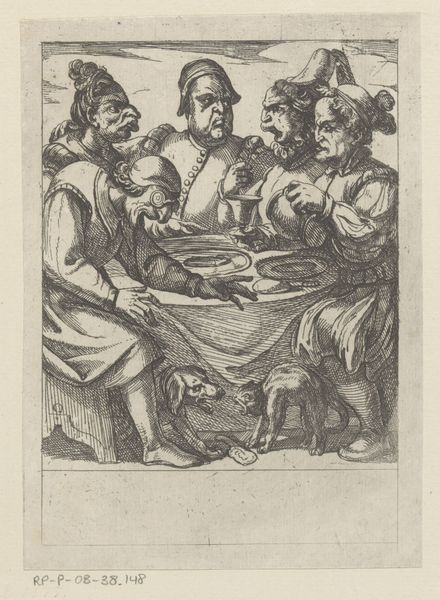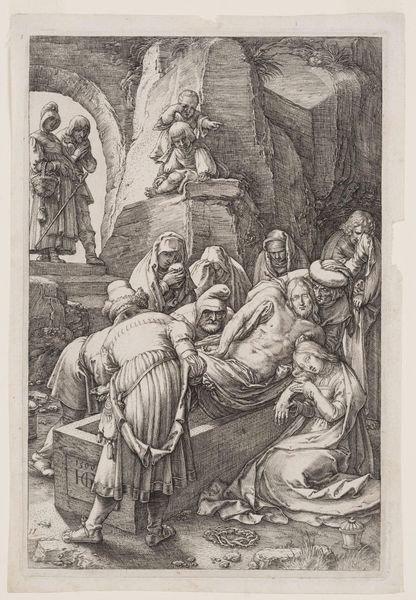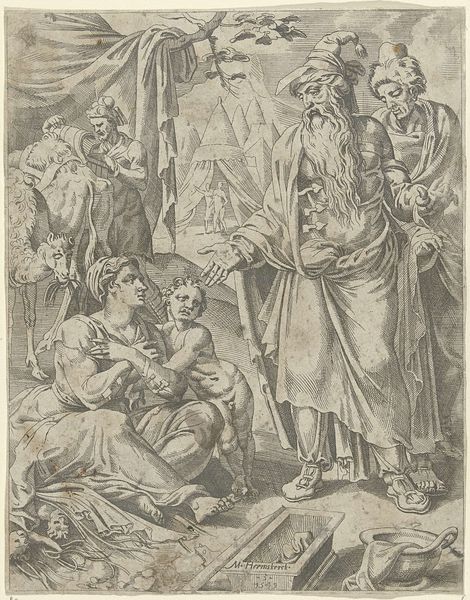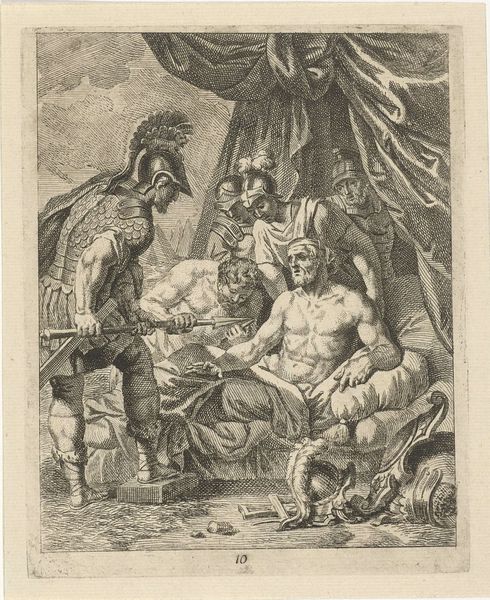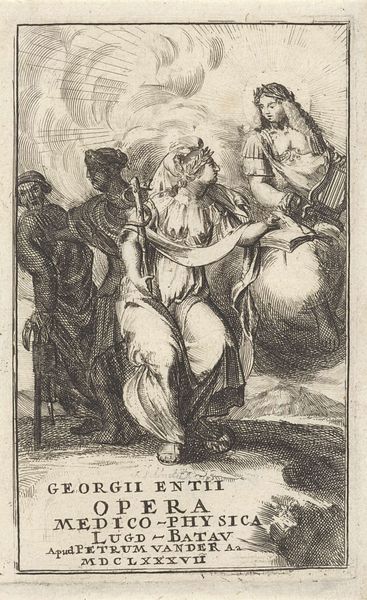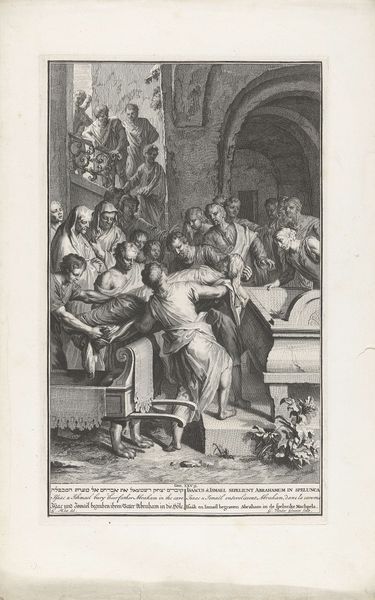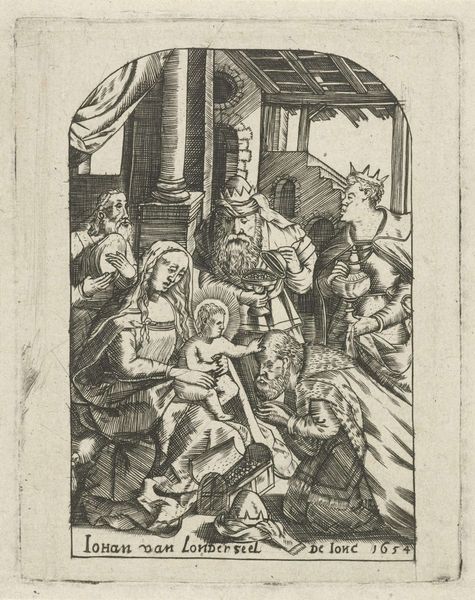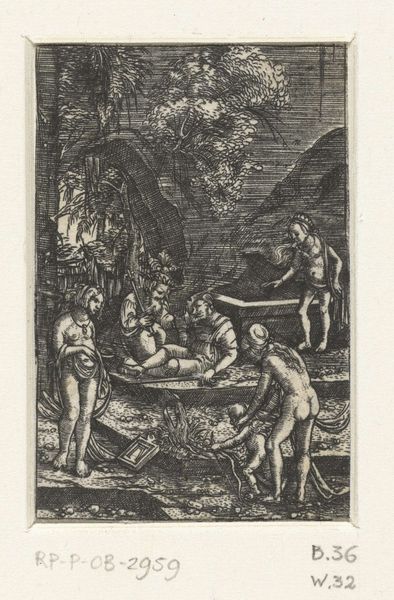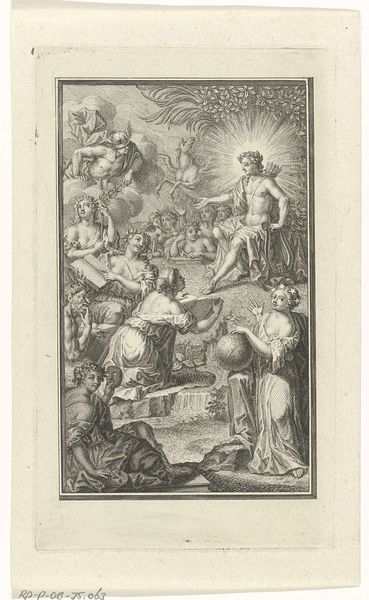
Dimensions: height 116 mm, width 71 mm
Copyright: Rijks Museum: Open Domain
This print, made by François Joseph Lonsing, is a delicate dance of line and tone, achieved through the meticulous process of etching. Lonsing would have coated a copper plate with a waxy ground, then used a sharp needle to scratch away the ground, exposing the metal. Immersed in acid, the lines bitten into the plate, creating grooves that would hold ink. The final print, like this one, would be made by forcing paper against the inked plate. The material’s influence is palpable. The fineness of the etched line allows for intricate detail, seen in the figures' expressions and the textures of their garments. The stark contrast between the black ink and the white paper gives the scene a dramatic intensity. Lonsing mastered a skilled tradition rooted in the printmaking practices, requiring careful labor and technical expertise. Considering the labor involved, printmaking allowed for the wider distribution of images, catering to a growing market for art and visual storytelling, playing its part in the burgeoning world of consumption.
Comments
No comments
Be the first to comment and join the conversation on the ultimate creative platform.

